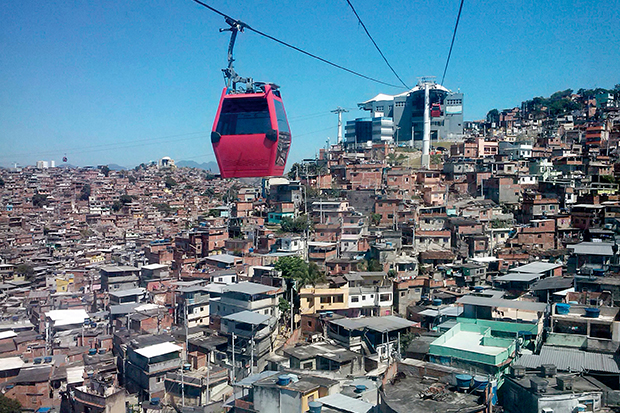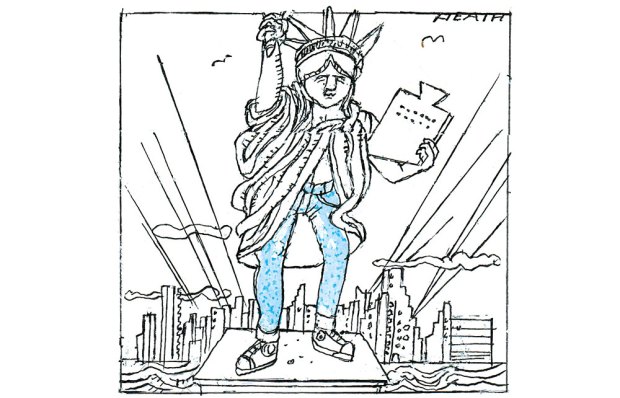Where are you going?’ demanded the boy on the wall. A walkie-talkie clipped to his denim shorts crackled, but there was no sign of a weapon. ‘The English Cemetery,’ I answered. He slid down. ‘You need to go back that way. Take the road on the right.’ The street in question was a dustbowl where diggers flattened the ground for the tramlines that should have arrived in time for the Olympics. But no, he insisted, there was no way of reaching the cemetery through the favela.
There are favelas and there are favelas, and the mesh of houses, shacks and alleys that extends across Morro da -Providência, above the English Cemetery close to the heart of Rio, is no ordinary one. In 1897, unpaid soldiers returning from a campaign to suppress a rebellion in the northeast state of Bahia occupied the hill. The place was nicknamed Morro da -Favela, after the mountain in Bahia on which the troops had camped. A few years later, the squatters were joined by refugees from Rio’s old city, displaced by slum -clearances. By the second decade of the 20th -century, the mass of ramshackle dwellings had become a byword for -violence and -criminality. Since then, the Morro da Favela has lent its name to the most notorious phenomenon in modern Brazil.
A hundred years earlier, the scene was very different. In the foothills of this ‘tropical mount, clothed in perpetual verdure’ (as a 19th-century visitor from Durham described it), the British who followed the Portuguese court from Lisbon to Rio in 1808 established their burial ground. Freedom of worship in Brazil was a concession they wheedled out of the ruling Braganza dynasty as thanks for chaperoning them across the Atlantic after Napoleon invaded Portugal. They chose the capital’s choicest site to bury their dead: a gentle incline opening out on to the bay on the route between the Braganzas’ city palace and their country residence at São Cristóvão. On this Arcadian spot, hundreds of merchants, soldiers, diplomats and sailors, not only from Britain but also from -Germany, Switzerland and other ‘heretic’ nations, were laid to rest. ‘The blights of winter invade it not,’ wrote the British tourist; ‘ranges of everlasting hills surround it.’
Snow may never have brushed the cemetery, but the hills of Rio proved less eternal than the writer had imagined. In the early 20th century, several were razed. Morro da Providência survived thanks to the hallowed ground on its lower slopes.
As the port grew, the streets in front of the cemetery became a playground for -sailors and prostitutes, while the favela at its back encroached on its whitewashed walls. Then, when the quayside was -extended north, much of the area was abandoned.
Rio’s waterfront regeneration has now reached the gates of the English Cemetery. A new cable car swings overhead, lifting visitors from one end of Morro da Providência to the other with a stop at the heart of the favela in between. Taxi drivers grumble that it robs them of fares through the fume-filled João Ricardo tunnel, which used to serve as the main route from the city centre.
Gentrification is some way off: in May, five gunmen and a police officer were killed in a firefight inside the favela. Yet while violence is not quite a thing of the past, the city has started to reintegrate the hill that embodies much of its modern history.
Got something to add? Join the discussion and comment below.
Get 10 issues for just $10
Subscribe to The Spectator Australia today for the next 10 magazine issues, plus full online access, for just $10.














Comments
Don't miss out
Join the conversation with other Spectator Australia readers. Subscribe to leave a comment.
SUBSCRIBEAlready a subscriber? Log in